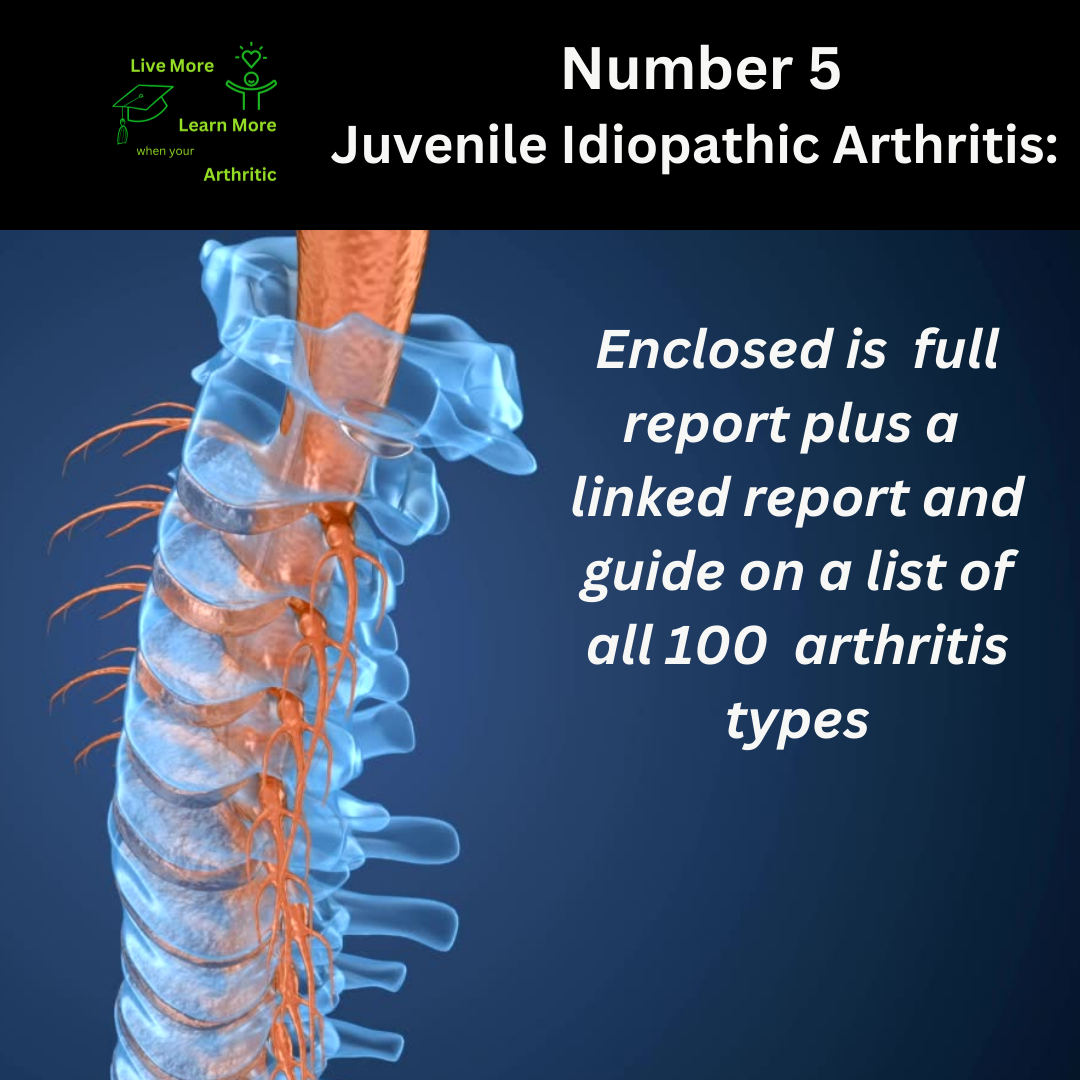
Juvenile Idiopathic Arthritis Number 5 on the list of 100 types of Arthritis
The Journey of Hope: Understanding and Conquering Juvenile Idiopathic Arthritis
In the vast landscape of medical conditions affecting children, Juvenile Idiopathic Arthritis (JIA) stands out as a silent adversary. Behind its complex name lies a condition that challenges young souls with pain and limitations, yet within this challenge lies a journey of hope, resilience, and promising advancements in science.
One of the key milestones in the battle against Juvenile Idiopathic Arthritis is achieving remission. Remission represents a state where the symptoms of arthritis are significantly reduced or even disappear entirely. It is the golden standard in the treatment journey, where the disease is brought under control, allowing children to reclaim their lives.
Achieving remission is not merely a medical feat; it is a triumph of resilience and determination. With advancements in treatments and a proactive approach, more children than ever are reaching this pivotal milestone.
Description of Juvenile Idiopathic Arthritis
Juvenile Idiopathic Arthritis (JIA) is a chronic autoimmune disorder that primarily affects children under the age of 16. This condition is characterized by inflammation in the joints, leading to pain, stiffness, and swelling. The exact cause of JIA remains unknown, but it is believed to involve a combination of genetic predisposition and environmental factors.
Causes and Triggers
While the precise causes of JIA are not fully understood, several factors are thought to contribute to its development. Genetics play a significant role, with certain gene variations increasing susceptibility. Additionally, environmental triggers such as infections or other immune system stimuli may initiate the autoimmune response seen in JIA.
Understanding these factors is crucial in developing targeted therapies and preventative measures.
Symptoms and Impact on Range of Motion
The symptoms of Juvenile Idiopathic Arthritis can vary widely among individuals but often include joint pain, stiffness (especially in the morning or after rest), swelling, and warmth around affected joints. Over time, inflammation can lead to joint damage and deformities, potentially limiting the range of motion and impacting daily activities.
Improving Quality of Life through a Proactive Approach
The journey toward a higher quality of life for children with JIA involves a proactive approach that encompasses both medical interventions and lifestyle strategies. Early diagnosis and aggressive treatment tailored to each child’s needs are crucial. This may involve a combination of medications, physical therapy, and lifestyle modifications.
Proactive management aims not only to control symptoms but also to prevent long-term joint damage and complications. Embracing a healthy lifestyle with proper nutrition, exercise, and emotional support can further enhance well-being.
Complications of Juvenile Idiopathic Arthritis
Despite significant progress in treatment, Juvenile Idiopathic Arthritis can present various challenges and potential complications. Persistent inflammation may lead to joint damage, growth disturbances, and even eye inflammation (uveitis) in some cases. Additionally, prolonged use of certain medications can have side effects, underscoring the importance of regular monitoring and personalized care.
In the realm of JIA research, exciting breakthroughs are continually emerging. Scientists are exploring novel treatment approaches that target specific pathways in the immune system, aiming to minimize side effects and enhance effectiveness. Genetic studies are shedding light on the underlying mechanisms of the disease, paving the way for precision medicine tailored to each child’s unique profile.
Moreover, advancements in technology, such as wearable devices and telemedicine, are improving access to care and empowering families to actively participate in managing JIA.
Conclusion: A Beacon of Hope
In conclusion, Juvenile Idiopathic Arthritis is more than a medical diagnosis; it is a call to action for innovation, resilience, and compassion. Through a multidisciplinary approach that combines cutting-edge science with unwavering support, children battling JIA can embark on a journey of hope—one where remission becomes the norm, limitations are surpassed, and dreams are within reach.
As we stand at the intersection of medical progress and human spirit, let us carry forward the torch of possibility, lighting the path toward a brighter future for every child with Juvenile Idiopathic Arthritis. Together, we can turn the tide of adversity into a story of courage, healing, and triumph.

